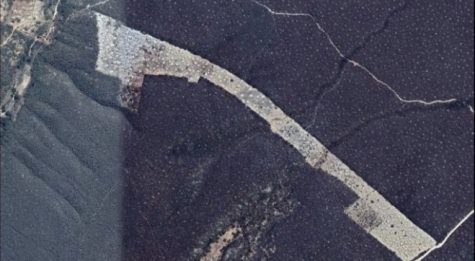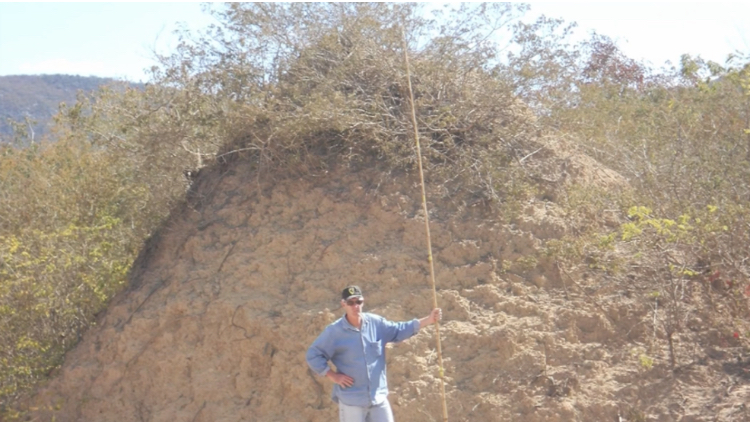Ancient Termite Colony, Just Beneath the Surface
Researcher in front of termite mound in Brazil.
Brazil is the land of football, Christ the Eedeemer statue, and beautiful beaches. However, there is a new discovery that is prominent to the country. People would have never thought that there would be a termite complex beneath the ground they were walking on.
In mid-November, researchers discovered mounds of dirt in thorny scrub forests. In fact, these mounds are large enough to be seen from satellites in the northeast region of Brazil. However, the mounds were dismissed as natural features of the land. Researchers have since attempted to date the center grains of sand in the mounds. According to Current Biology, the mounds date back 690 years to 3820 years ago, which is around the age of the great pyramids of Giza. The mounds are about nine meters (29.5 feet) wide and two and a half meters (8.2 feet) tall.

View of termite mounds in Brazil from space.
“I think that this is a perfect example of the amazing things we still have to discover to this day. Even though they are old, we still are finding things from ages ago and that’s awesome,” said Rochester Adams High School science teacher Jerome Bondy.
There are numerous mounds spanning a wide area. The mounds are not only used as entrances and exits, but are also connected to food supplies like dead leaves. As a matter of fact, these tunnels can span up to the same area as Great Britain.
“I never would have thought that there was a termite network so old today. This is a huge discovery and I’m sure there will be a lot of amazing finds from this,” said sophomore Nathan Rill.
There are many things that are still unknown about the complex. Such as, the researchers studying the mounds and tunnel networks do not know where the queen chamber is, along with other locations. These discoveries will come with time considering the sheer proportions of the termite colony. In summary, this termite network is an amazing accomplishment for numerous species.







